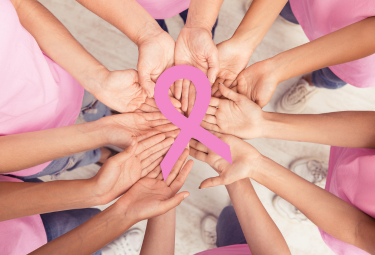Taking Medicines Safely as You Age
October 14, 2024Medicines are intended to help us live longer and healthier, but taking medicines the wrong way or mixing certain drugs and supplements can be dangerous. Older adults often have multiple medical conditions and may take many medicines, which puts them at additional risk for negative side effects. Read on to learn how to safely take and keep track of all your medicines.
What are medicines?
Medicines, often referred to as drugs, are used to prevent or treat diseases and other health conditions. Medicines can be obtained by a prescription or over the counter (OTC). Prescription drugs are medicines that you can get only with a doctor’s order; for example, pills to lower your cholesterol or an asthma inhaler. OTC medications can be purchased without a prescription; for example, aspirin or lubricating eye drops.
Dietary supplements are not considered drugs because they are not intended to prevent or treat diseases. Rather, these products are intended to maintain or improve health, and they may help you meet your daily requirements for essential vitamins and minerals. For example, calcium and vitamin D can help build strong bones. Learn more about taking supplements safely in the NIA article, Dietary Supplements for Older Adults.
It can be dangerous to combine certain prescription drugs, OTC medicines, dietary supplements, or other remedies. For example, you should not take aspirin if you take warfarin for heart problems. To avoid potentially serious health issues, talk to your doctor about all medicines you take, including those prescribed by other doctors, and any OTC drugs, vitamins, supplements, and herbal remedies. Mention everything, even ones you use infrequently.
Starting a new medicine
Talk with your health care provider before starting any new prescription, OTC medicine, or supplement, and ensure that your provider knows everything else you are taking. Discuss any allergies or problems you have experienced with other medicines. These might include rashes, trouble breathing, indigestion, dizziness, or mood changes. Make sure your doctor and pharmacist have an up-to-date list of your allergies so they don’t give you a medicine that contains something that could cause an allergic reaction.
You will also want to find out whether you’ll need to change or stop taking any of your other prescriptions, OTC medicines, or supplements while using this new medicine. Mixing a new drug with medicines or supplements you are already taking might cause unpleasant and sometimes serious problems. For example, mixing a drug you take to help you sleep (a sedative) and a drug you take for allergies (an antihistamine) can slow your reactions and make driving a car or operating machinery dangerous.
When starting a new medication, be sure to write down the name of the drug, the dose, and why it’s being prescribed for you. Also, make note of any special instructions for how to take the medicine. For many drugs, this information is included on the bottle or prescription label.
Filling your prescription
When you get your prescriptions filled, the pharmacist can answer many of your questions about prescription drugs, OTC medicines, and supplements. Try to have all your prescriptions filled at the same pharmacy so your records are in one place. This will help alert the pharmacist if a new drug might cause a problem with something else you’re taking. If you’re unable to use just one pharmacy, share your list of medicines and supplements with the pharmacist at each location when you drop off your prescription.
When you have a prescription filled:
- Ask your pharmacist if there is a patient profile you can fill out, so the pharmacy is aware of all drugs and OTC medications, vitamins, and supplements you take.
- Tell the pharmacist if you have trouble swallowing pills. There may be liquid medicine available. Do not chew, break, or crush tablets without first asking if this will change the way the drug works.
- Make sure you can read and understand the name of the medicine as well as the directions on the container and on the color-coded warning stickers on the bottle. If the label is hard to read, ask your pharmacist to use larger type.
- Read all the information about your medication carefully. Many prescription medicines come with paper handouts, called medication guides, that contain information to help patients avoid serious side effects.
- Check that you can open the container. If not, ask the pharmacist to put your medicines in bottles that are easier to open.
- Ask about special instructions on where to store a medicine. For example, should it be kept in the refrigerator or in another climate-controlled place?
- Check the label on your medicine before leaving the pharmacy. It should have your name on it and the directions provided by your doctor. If it doesn’t, don’t take it, and talk with the pharmacist.
The image below points out information typically present on a prescription label. Please note that your prescription label may have a different format than the one shown. The prescription number is usually printed in the upper left corner of the label.
Talk with your doctor or pharmacist if you have questions about the written information that comes with your prescription.
Medication side effects
Unwanted or unexpected symptoms or feelings that occur when you take medicine are called side effects. Side effects can be relatively minor, such as a headache or a dry mouth. They can also be life-threatening, such as severe bleeding or damage to the liver or kidneys. The side effects of some medications can also affect your driving.
Some side effects may appear when you start taking a medicine but get better with time. Others occur once in a while. But some side effects may be ongoing while you’re on the medication. If you have uncomfortable side effects, don’t stop taking your medicine before you talk with a health care provider. Write them down so you can report them to your doctor or pharmacist accurately. Call your doctor right away if you have any problems with your medicines or if you are worried that the medicine might be doing more harm than good. Your health care provider may be able to prescribe a different medicine or help you deal with side effects in other ways.
Keeping track of your medicines
Many older people take multiple medications, and it can be challenging to keep track of everything. Here are some tips that can help:
- Make a list. Write down all medicines you take, including OTC drugs. Also include any vitamins or dietary supplements. The list should include the name of each medicine or supplement, the amount you take, and time(s) you take it. If it’s a prescription drug, also note the doctor who prescribed it and the reason it was prescribed. Show the list to all your health care providers, including physical therapists and dentists. Keep one copy in a safe place at home and one in your wallet or purse.
- Get familiar with your medicines. If you take more than one medicine, make sure you can tell them apart by size, shape, color, or the number imprinted on the pill.
- Create a file. Save all the written information that comes with your medicines and keep it somewhere you can easily refer to it. Keep these guides for as long as you’re taking the medication.
- Check expiration dates on bottles. Don’t take medicines that are past their expiration date. Your doctor can tell you if you need a refill.
- Secure your medicines. Keep your medicines out of the reach of children and pets. If you take any prescription pain medicines (for example, morphine, other opioids, or codeine), keep them in a locked cabinet or drawer. If your medicines are kept in bottles without safety caps because those are hard for you to open, be extra careful about where you store them.
- Dispose of your medicines safely. Check the expiration dates on your medication bottles and discard any unused or expired medicines as soon as possible. Timely disposal of medicines can reduce the risk of others taking them accidentally or misusing the medications on purpose. Check with your doctor or pharmacist about how to safely discard expired or unneeded medications, or review the FDA’s guidance on Where and How To Dispose of Unused Medicines.
Taking medicines safely
Here are some tips to help you take your medicines safely:
- Follow instructions. Read all medicine labels and be sure to follow instructions. Don’t take a larger dose of a medicine, thinking it will help you more. This could be very dangerous and even deadly. And don’t skip or take half doses of a prescription drug to save money.
- Take medicine on time. Some people use meals or bedtime as reminders to take their medicine. Other people use charts, calendars, or weekly pill boxes. You can also set timers and write reminders to take your medication. Medication reminder apps for smartphones are becoming more popular; these apps can help you remember when and how to take your medications each day.
- Turn on a light. Don’t take medicine in the dark; you might make a mistake.
- Report problems. Call your doctor right away if you have any trouble with your prescriptions, OTC medicines, or supplements. There may be something else you can take.
- Tell your doctor about alcohol, tobacco, and drug use. Alcohol, tobacco, and other drugs can affect how well your medicines work. Be honest with your doctor about how much you use.
- Ask your loved ones for help. Take a friend or relative with you to your doctor’s appointments if you think you may need help understanding or remembering what the doctor tells you.
- Check before stopping. Take prescription medicine until it’s finished, or your doctor says it’s all right to stop. Note that some medicines are supposed to be taken only “as needed.”
- Don’t share. Do not take medicines prescribed for another person or give yours to someone else.
To learn more, please visit Taking Medicines Safely as You Age | National Institute on Aging (nih.gov)




